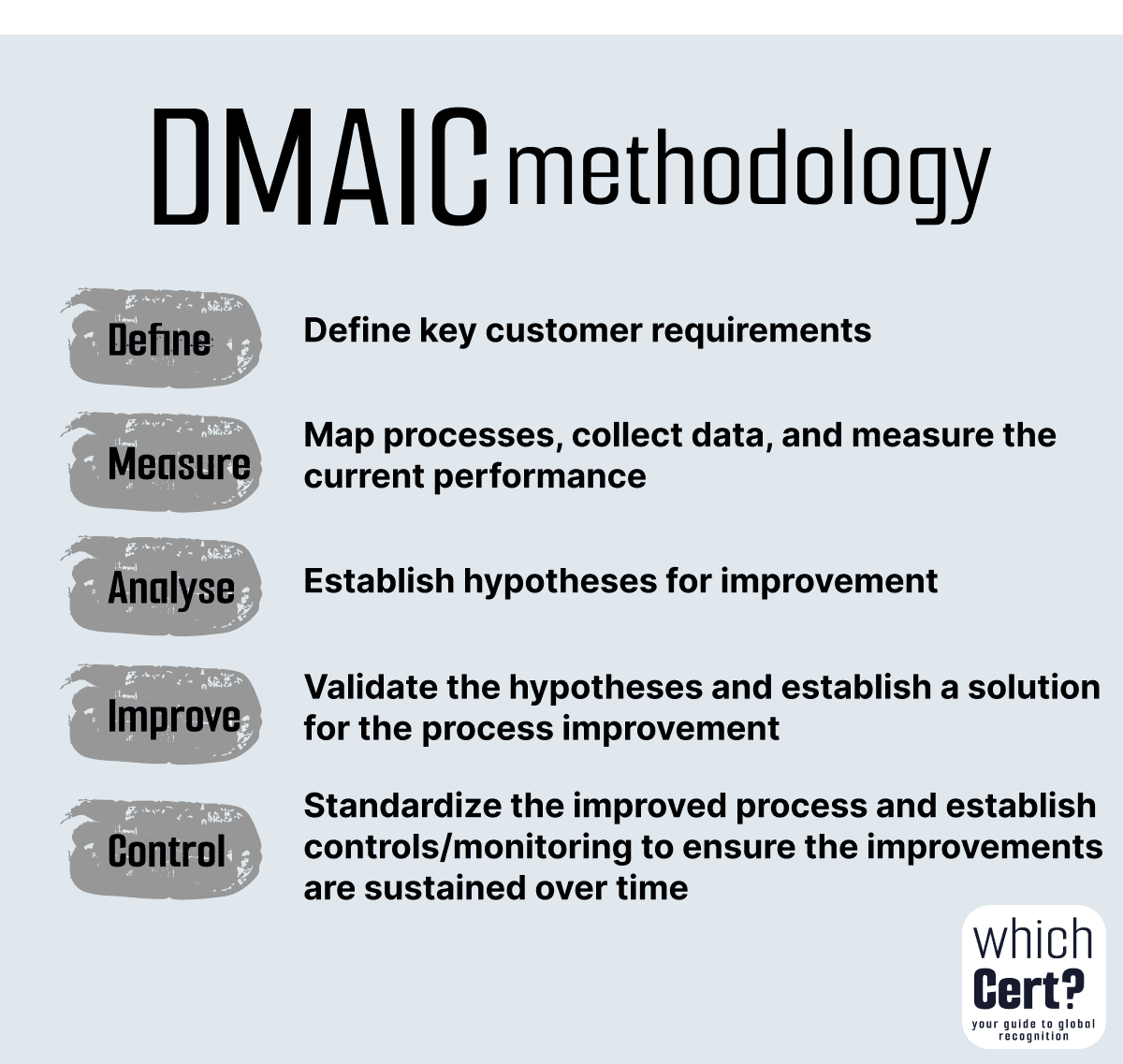Six Sigma belts? Is it about martial arts? I used to think black belts were only for judo. Then I learned that business has belts too. Lean Six Sigma can advance your career and is often simpler to earn than a martial arts belt.
In this post, I’ll share the different levels of Six Sigma. You’ll see how each belt builds on the last. You’ll learn about roles, knowledge, and expected salaries at each stage.
Lean Six Sigma Belt Levels Summary
Belt Level | Description, Key Roles, Typical Salary Range
- Master Black Belt: Senior strategist and mentor. Role: Oversees projects; trains Black Belts. $141,000–$186,000.
- White Belt: Introductory training; certificate; not accredited — N/A
- Yellow Belt: Basic Six Sigma tools; helps in DMAIC phases. Role: Team member; supports Define and Measure. $55,000–$95,000.
- Orange Belt: Intermediate level, specific to the organization; recognition varies.
- Green Belt: Uses advanced tools part-time; leads smaller DMAIC projects. Role: Project lead under Black Belt. $91,000–$135,000.
- Black Belt: Full-time leadership; advanced stats. Role: Leads complex DMAIC projects; mentors Green Belts. $109,000–$147,200.
Introduction
Six Sigma projects focus on improving processes. They start with a clear problem and seek a solution, but this can take time! These projects are data-driven and involve collecting and analyzing large datasets. They may also include client interviews, making them seem like marketing work. In reality, Six Sigma includes all these aspects. It’s a multidisciplinary approach that requires teamwork; no one can succeed alone.
This article shows how each Lean Six Sigma belt level builds on the last. It starts with White Belt, then moves to Yellow Belt, Green Belt, Black Belt, and ends with Master Black Belt.
What are the Different Levels of Six Sigma?
In Lean Six Sigma, you might hear there are four belts: Yellow, Green, Black, and Master. Sometimes, people mention only three belts, leaving out the Master Black Belt. The White Belt is often overlooked.
Explore how to nail Lean Six Sigma Certification!
Lean Six Sigma White Belt (or LSS White Belt) is not accredited by all major bodies. Some provide awareness-level courses known as White Belt training. These are more like completion certificates than accredited Lean Six Sigma certificates.
You can begin with the Yellow Belt because this certification lacks widespread recognition.
Some organizations have an Orange Belt between Yellow and Green. But, it lacks widespread acceptance.
Finally, the Council of Six Sigma has levels for Six Sigma Green Belts and Black Belts.
Lean Six Sigma Professionals’ Roles in a DMAIC Project
The main structure for Six Sigma projects is DMAIC. It stands for Define, Measure, Analyze, Improve, and Control.

It’s a structured, data-driven way to improve processes. Teams begin by defining the problem. They measure current performance, analyze root causes, and then make improvements. Finally, they establish controls. This structure works the same for a Lean Six Sigma Yellow Belt, Six Sigma Green Belt, or higher.
In a DMAIC project, success relies on the method and teamwork. Professionals with different levels of Six Sigma training contribute to this effort. Each level comes with different salary expectations based on expertise and responsibilities. Here are the Six Sigma Belts and key non-Six Sigma roles that often join a DMAIC project:
Lean Six Sigma Belts’ Roles
Certified Lean Six Sigma Master Black Belts
These full-time experts manage DMAIC efforts. They train Black Belts and provide advanced guidance. Their salary range is $141,000 – $186,000.
Certified Lean Six Sigma Black Belts
They lead DMAIC projects full-time. They use advanced tools, train Green Belts, and make sure projects succeed. Their salary range is $109,000 – $147,200.
Certified Lean Six Sigma Green Belts
They work part-time on DMAIC projects. They use Six Sigma tools in their daily tasks. Also, they lead smaller projects with support from Black Belts. Their salary range is $91,000 – $135,000.
Certified Lean Six Sigma Yellow Belts
As team members, they have basic training in Six Sigma and understand quality. They contribute their expertise and support during DMAIC phases as needed. Their salary range is $55,000 – $95,000.
Non-Lean Six Sigma Key Professionals’ Roles in DMAIC Projects
Executive Leaders
They show commitment from the top. They set a vision and goals, assign resources, and support DMAIC projects.
Project Sponsors (Champions)
- They identify and prioritize project opportunities.
- They approve projects and provide resources.
- They remove barriers to DMAIC execution.
Financial Representatives
These individuals are outside the project team. They review costs, spot savings, and share the financial gains from DMAIC improvements.


